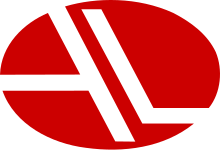AutoLatina
This article needs additional citations for verification. (February 2018) |
 | |
| Industry | Automotive |
|---|---|
| Founded | 1987 |
| Defunct | 1995 |
| Fate | Dissolved |
| Headquarters | Argentina |
| Parent | Volkswagen do Brasil (51%) Ford Brasil (49%) |
AutoLatina was a joint venture between Volkswagen Group subsidiary Volkswagen do Brasil (51%) and Ford Motor Company subsidiary Ford Brasil (49%) in South America. The main reason for the joint venture was the bad economic situation at the time, which made joint survival more attractive than an individual fight for a share in a dwindling market.
Four divisions - Ford of Argentina, Ford Brasil (Ford of Brasil), Volkswagen Argentina, and Volkswagen do Brasil - formed AutoLatina in July 1987.[1]
Volkswagen managed the car division, and Ford the truck division.
This resulted in the two companies sharing badge engineered models. These included:
- Ford Verona / Volkswagen Apollo
- Ford Escort Mk V / Volkswagen Pointer
- Ford Orion / Volkswagen Logus
- Volkswagen Santana / Ford Galaxy/Versailles
- Volkswagen Quantum / Ford Royale
A clay model of a small Ford 3-door hatchback derived from the Volkswagen Gol was made, as well as sketches of 5-door, panel van and XR2 versions. Stylists found difficulty styling around the unusual proportions caused by engine packaging, causing dissatisfaction with Ford's management towards the platform restrictions. Models using Volkswagen's B5 platform were also considered, such a SUV-like "RSV" model, an MPV model and derived pickup, and a Ford sedan and wagon. Sketches were also produced of Fusca "Icon" concepts (such as buggys and hot rods), a new-generation Gol 3, and cabriolet and pickup variants of the Logus. A facelifted Logus was cancelled due to the collapse of the venture.[2] [3][4]
The AutoLatina venture was dissolved in December 1995.[5] The market shares of both companies had steadily eroded since the merger. Market liberalization also made it unnecessary to have separate development lines for Latin America, and both manufacturers wanted to incorporate theirs into the global brand lineups. The companies thus resumed their separate activities, regaining whatever physical assets they had before the merger.[1]
Truck Division[]
Volkswagen Commercial Vehicles and Ford Trucks were built alongside each other in the Ipiranga complex, both shared parts and platforms. Ford kept manufacturing trucks for Volkswagen for a while after the break-up, although they proceeded to develop their own truck manufacturing capacity.[1]
The Truck Division also exported trucks to the Paccar Group in the United States, where they were sold with Kenworth and Peterbilt badging.
References[]
- ^ a b c Pereira Filho, Arthur (1994-12-02). "Ford e Volks anunciam fim da Autolatina; Nova direção" [Ford and VW announce the end of Autolatina; new directions]. Folha de S.Paulo (in Portuguese). Retrieved 2018-11-06.
- ^ "Autolatina - Ford Brasil". www.shado.co.uk. Retrieved 2021-07-21.
{{cite web}}: CS1 maint: url-status (link) - ^ "VW Fusca Concepts". www.shado.co.uk. Retrieved 2021-07-21.
{{cite web}}: CS1 maint: url-status (link) - ^ "VW LOGUS facelift". www.shado.co.uk. Retrieved 2021-07-21.
{{cite web}}: CS1 maint: url-status (link) - ^ Bradsher, Keith (1997-05-16). "After Latin Venture Fails, VW Succeeds And Ford Scrambles (Published 1997)". The New York Times. ISSN 0362-4331. Retrieved 2021-03-12.
External links[]
- Car manufacturers of Brazil
- Defunct motor vehicle manufacturers of Brazil
- Vehicle manufacturing companies established in 1987
- Vehicle manufacturing companies disestablished in 1995
- Joint ventures
- Volkswagen Group factories
- Ford factories
- Car manufacturers of Argentina
- Defunct motor vehicle manufacturers of Argentina
- 1987 establishments in Brazil
- 1995 disestablishments in Brazil